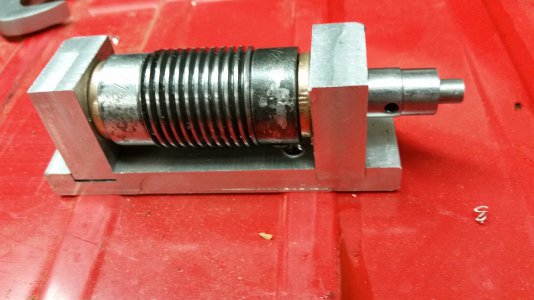The attachment is a bearing cage for a worm gear. This did not work because I did not machine the holes in the 'ears' square. The part is made from a base and two 'ears' providing a bearing surface. I am planning to start over and so the question: . How to machine two 'identical' parts to close tolerances.
The tolerance surfaces on the bearing ears are: 1. the bottom and one end side need to be square and 2. the hole needs to a fixed distance from the corner in 1. above and be parallel to the end surfaces in 1 above. The other dimensions are not critical.
My thought was to machine in one pass. I would create a blank and clamp it to the mill bed. The process would be: 1. machine the two ends above, 2. identify the corner, measure off the hole center, drill the hole.
Is there a better way?
The tolerance surfaces on the bearing ears are: 1. the bottom and one end side need to be square and 2. the hole needs to a fixed distance from the corner in 1. above and be parallel to the end surfaces in 1 above. The other dimensions are not critical.
My thought was to machine in one pass. I would create a blank and clamp it to the mill bed. The process would be: 1. machine the two ends above, 2. identify the corner, measure off the hole center, drill the hole.
Is there a better way?
Attachments
Last edited:


